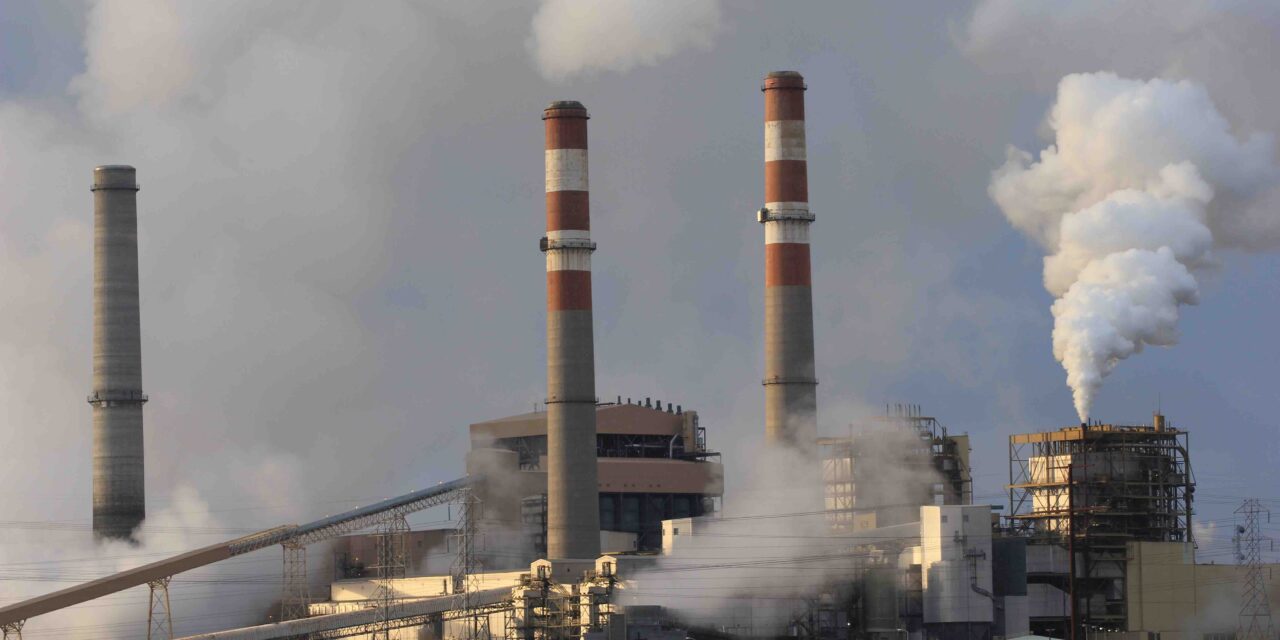On the last day of the court session on Thursday, the U.S. Supreme Court, in a six-three ruling, struck down the ability of the executive branch of the government to protect clean air and address the climate crisis.
Coming on the final day of perhaps the most controversial term in its history, the U.S. Supreme Court’s decision in West Virginia vs. U.S. Environmental Protection Agency severely restricts the U.S. EPA’s ability to address the climate crisis by limiting the agency’s ability to regulate greenhouse gas emissions from industrial sources.
The ruling in effect takes the ability to set our climate policy and to limit greenhouse gas emissions out of the hands of the scientists, and places it in the hands of the Supreme Court; who are hardly environmental exerts.
The majority’s opinion appears to completely disregard foundational principles of judicial decision-making. In her dissent, Justice Kagan succinctly stated the long-term implications of the majority’s decision, “The Court appoints itself—instead of Congress or the expert agency—the decision-maker on climate policy. I cannot think of many things more frightening.”
Environmental Protection Agency, EPA Administrator Michael S. Regan:
“As a public health agency, EPA’s number one responsibility is to protect people’s health, especially those who are on the front lines of environmental pollution. Make no mistake: we will never waver from that responsibility.
While I am deeply disappointed by the Supreme Court’s decision, we are committed to using the full scope of EPA’s authorities to protect communities and reduce the pollution that is driving climate change. We will move forward to provide certainty and transparency for the energy sector, which will support the industry’s ongoing efforts to grow our clean energy economy.
For his full comments, follow this link.
In response to the ruling, Colorado’s U.S. Senators and Governor issued the following statements.
Colorado Governor Jared Polis:
“We have already locked in the closure of Colorado’s coal plants no later than 2031 because they produce the highest cost electricity. To save people money, we are rapidly moving to lower-cost solar and wind energy, and today’s decision does not affect our plans. But today’s Supreme Court decision does narrow the ability of the federal government to take commonsense steps to protect the air we breathe so state leadership is now more important than ever,” said Polis.
“In Colorado, we are showing the nation how cost savings from clean energy is rapidly reducing pollution, saving people money, and creating jobs. Colorado utilities are already on a path to meet or exceed 80 percent renewable energy by 2030,” he added. “We are fighting for a cleaner, healthier community, doubling down on climate and clean energy strategies to save people money on everything from energy bills to health care and bring good-paying green jobs to Colorado.”
This spring, Governor Polis signed transformational laws to protect Colorado’s air, prepare and respond to wildfires and the Polis-Primavera administration has enacted nation-leading plans to address climate change, create good-paying jobs and protect our air. The Polis-Primavera administration released Colorado’s Greenhouse Gas Pollution Reduction Roadmap and the majority of Colorado utilities are on the path of exceeding 80 percent renewable energy by 2030.
U.S. Senator John Hickenlooper:
“The Court is harming America once again by playing politics instead of following science and the law. Climate change is the crisis of our lifetime and Colorado is on the frontlines. Congress must act to correct this flawed decision – lives are at stake.”
Hickenlooper is a member of the U.S. Senate Committee on Energy and Natural Resources. He spearheaded first-in-the-nation limits on methane pollution while Colorado’s Governor and has pushed the EPA to use Colorado’s success as a national model.
U.S. Senator Michael Bennet:
“As climate-fueled droughts and wildfires incinerate Colorado and the American West, the Supreme Court’s decision to hamstring the EPA is judicial malpractice. This ruling severely limits EPA’s ability to keep our air and water clean and will leave communities more vulnerable to pollution and climate change.
“The bipartisan Clean Air Act has a 50-year track record of effectively protecting public health, curbing air pollution, and safeguarding our environment. This decision ignores the clear authority the Act gives EPA to keep our communities healthy and safe. With climate change bearing down on the American West, now is the time to strengthen protections for cleaning up air and water and for cutting climate pollution, not weaken them.”
It should be noted that the elected officials above are all Democrats, and the justices which just gutted the EPA authority were all appointed by Republican presidents; three by former President Donald Trump. This makes it hard not to see a political agenda at work in this decision.
The environmental and climate organizations have issued statements as well.
WildEarth Guardians‘ Executive Director, John Horning:
“We are outraged and saddened by the reckless and blatantly biased actions of the U.S. Supreme Court. In several decisions over the last week that sent shock waves across the country, the conservative court majority repeatedly took rights away from the people, advanced its agenda to dismantle the administrative state, and upended long-established judicial precedent. The Supreme Court has taken a series of extreme and dangerous steps, unmoored from precedent and indifferent to the welfare of the people.”
The EPA ruling exposes the majority’s bias in favor of fossil fuel industry profits over public health and a livable climate. To reach its conclusion that EPA overstepped its authority in the Clean Power Plan, the majority cherry-picked language from the Clean Air Act and the Court’s prior decisions to create support for a pre-determined outcome, ignoring the Court’s long-established practice of interpreting statutes to give effect to Congress’s intent.”
Featured image: Comanche power plant. Photo by Allen Best.








Recent Comments